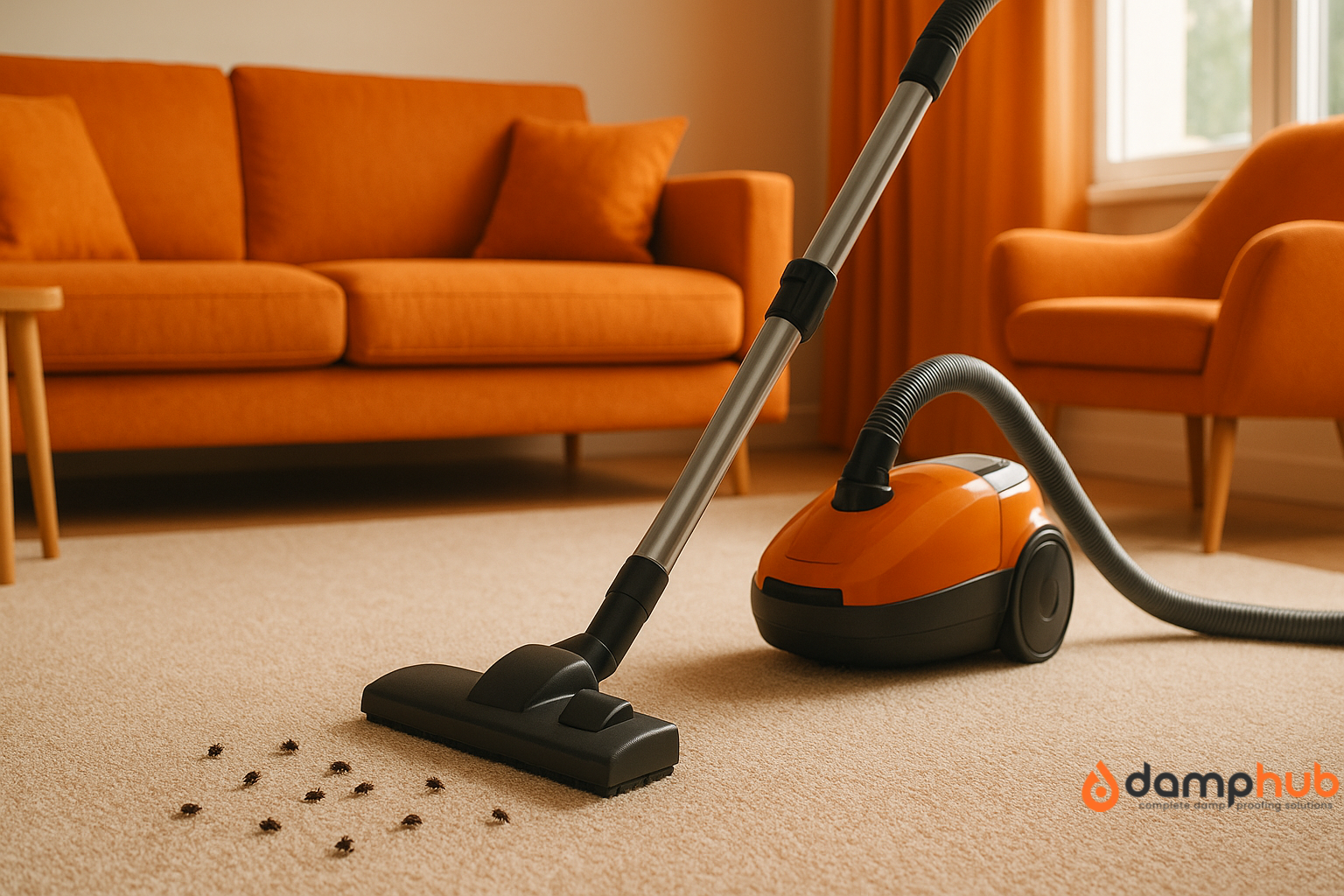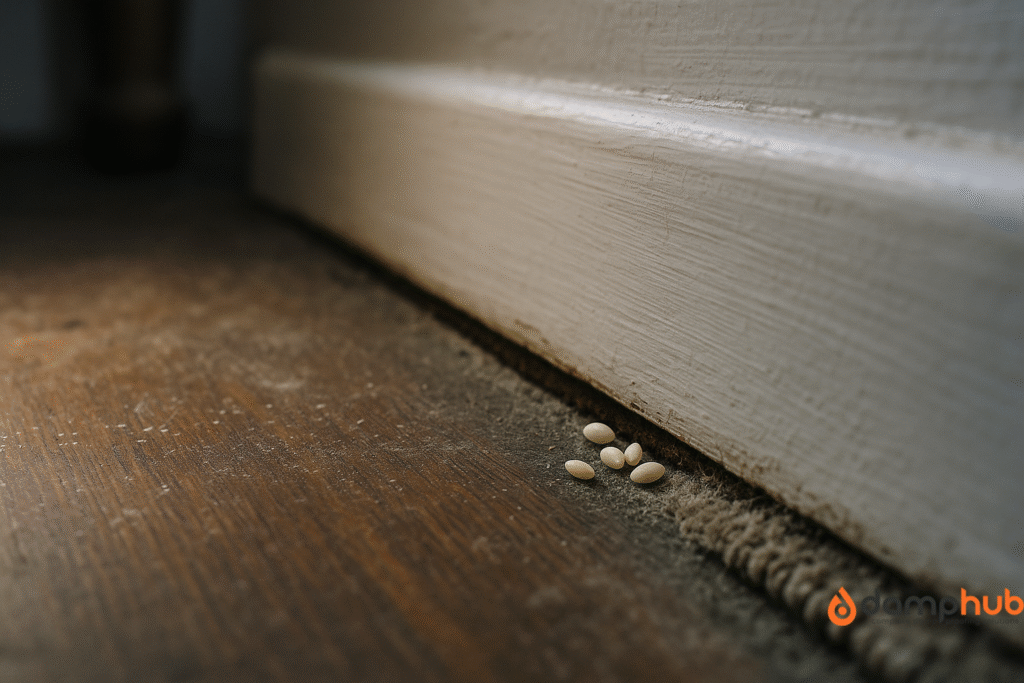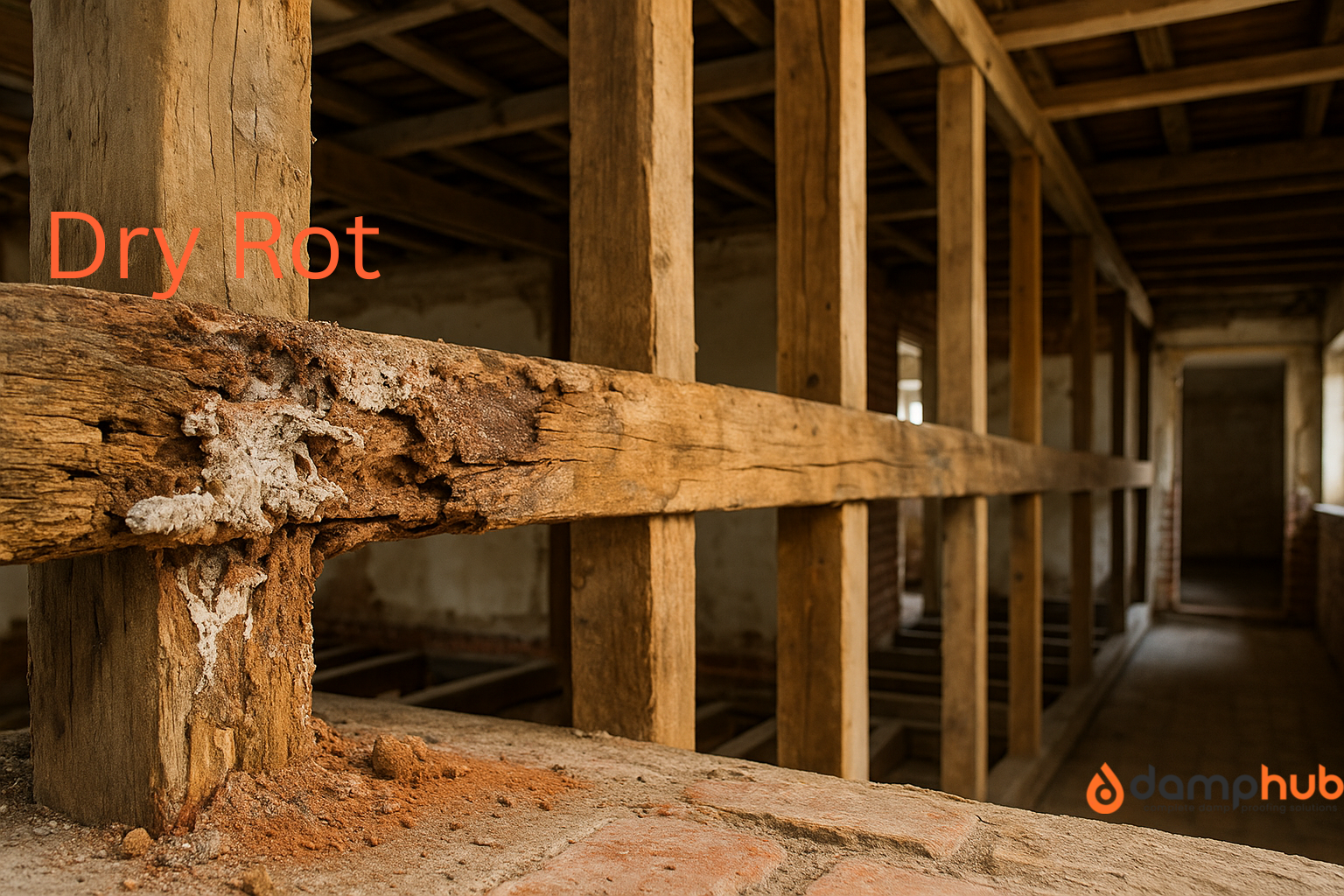
You don’t usually notice carpet beetles right away. More often, it’s the little signs that give them up—a thin, worn-looking patch on the carpet, a handful of tiny brown husks along the skirting board, or a favourite jumper that suddenly has neat little holes. Look closer and you might even catch sight of a few oval-shaped beetles crawling across the floor. That’s usually the moment most people reach for the hoover. If you can see them on the carpet, surely a deep vacuum will sort it out?
It’s a fair thought. But here’s the real question: will vacuuming get rid of carpet beetles, or is it only a quick fix?
In this article, we’ll look at how effective vacuuming really is, what it can and can’t do, and the extra steps you’ll need to keep carpet beetles from coming back.
But if you are in a hurry, here is a quick answer: Vacuuming routinely can remove adults, larvae, and shed skins from your home environment, but it won’t always solve the problem entirely. A combination of strategies is often needed to stop them from returning. Let’s break this down in more detail.
For more information, here is a related article you must read: Carpet Beetles In The UK: Identification, Prevention & Treatment Guide
Can You Vacuum Carpet Beetles?
Vacuuming is one of the first lines of defence against carpet beetles. It can physically remove larvae, adult beetles, and the eggs they lay in your carpets, furniture, or clothing. However, it’s crucial to understand that vacuuming alone won’t always get rid of them permanently.
- Adults vs. Larvae: Adult carpet beetles are more mobile and harder to catch, but larvae, which do the real damage, tend to hide in dark, undisturbed areas. Regular vacuuming helps disrupt their life cycle, making it harder for them to mature and reproduce.
- Vacuum Reach: Standard vacuums may miss hidden crevices, under furniture, or along baseboards. Using attachments and taking the time to move furniture can make a noticeable difference.
- After vacuuming: Simply vacuuming is not enough. Always empty the vacuum immediately after use and seal the bag or clean the canister to prevent beetles from crawling back into your home.
Pro Tip
When vacuuming carpets and rugs, go over the same area several times, in multiple directions, to ensure you capture eggs and larvae that may be clinging to fibres. A single pass is rarely enough.
Can Bugs Survive in a Vacuum Chamber?
You might think a vacuum is a one-way ticket for carpet beetles, but some bugs are surprisingly hardy. Many insects can survive short periods inside a vacuum, especially if the debris isn’t compressed or the vacuum is not emptied right away.
Larvae, in particular, can cling to fibres and even survive inside the vacuum bag for a while. They don’t thrive there, of course, but they might wait for the opportunity to escape and reinfest your home. This is why proper disposal is critical.
Good To Know
If you’re using a bagless vacuum, the dirt compartment should be emptied directly into a sealed bin outside the home. For bagged vacuums, seal the bag in a plastic bag before disposal to prevent any survivors from escaping.
Will Vacuuming Every Day Get Rid of Carpet Bugs?
Carpet beetles are different from bed bugs, but many people wonder about daily vacuuming as a preventive measure. Vacuuming every day can help reduce the number of larvae and adults in high-traffic areas.
- High-Risk Areas: Focus on areas where natural fibres are present—wool rugs, upholstered furniture, clothing piles, and pet bedding.
- Frequency Reality: While daily vacuuming may help, it won’t remove eggs hidden deep in carpet fibres or behind baseboards. A consistent weekly routine is more practical for long-term maintenance.
Vacuuming is part of a broader integrated pest management approach. Combining cleaning with targeted treatments like insecticide/ carpet beetle sprays, pheromone traps, or even professional pest control ensures better results.

How to Vacuum When You Have Carpet Bugs
Vacuuming effectively against carpet beetles requires a methodical approach. It’s not just about running the vacuum across the floor.
- Move Furniture: Carpet beetles love dark, undisturbed areas. Pull back couches, chairs, and rugs to access hidden spots.
- Use Attachments: Crevice tools help reach edges, corners, and tight spots where larvae hide.
- Go Slow: Move the vacuum slowly to pick up eggs, larvae, and beetles rather than skimming the surface.
- Seal and Dispose: Immediately after vacuuming, dispose of the bag or empty the canister into a sealed bin outside the home.
🛠️ Try This
After vacuuming, lightly spray the area with a natural deterrent like diatomaceous earth. This fine powder sticks to larvae, dehydrating them and providing extra protection.
How Often Should You Vacuum to Get Rid of Carpet Beetles?
Consistency is key. Most experts recommend a weekly vacuuming routine, but some heavily infested homes may benefit from twice-weekly sessions. Remember: vacuuming is only one part of the battle.
- High-Traffic Zones: Focus on rugs, pet areas, and entryways.
- Hidden Areas: Don’t forget under beds, behind wardrobes, and along skirting boards.
- Clothing and Storage: Vacuum storage boxes, garment bags, and closets where wool or other natural fibres are kept.
Even with thorough cleaning, periodic inspections are essential. Catching an infestation early makes eradication much easier.

How Long Can a Bug Stay Alive Inside a Vacuum?
It depends on the species and conditions. Carpet beetle larvae can survive for a few days inside a vacuum bag if the environment is dry and food particles are present. Adults are generally less resilient and may die sooner without access to food.
This resilience is why vacuuming alone is rarely sufficient. Combine vacuuming with environmental controls like reducing clutter, storing clothing properly, and using traps to break the life cycle.
See our other useful post, you may want to read for more guides: How to Get Carpet Beetle Treatment (Without Making Things Worse)
Can Bed Bugs Survive in Vacuum Sealed Bags?
Interestingly, some insects can survive surprisingly well in vacuum-sealed environments. Bed bugs, and in some cases carpet beetle larvae, may enter a state of dormancy under low oxygen conditions.
- Risk: Sealing contaminated items without prior treatment may trap pests in a bag, only for them to escape later.
- Solution: Treat textiles first—wash, dry on high heat, or freeze items—before sealing to avoid survival.
What Is the Fastest Way to Get Rid of Carpet Beetles?
A multi-pronged approach works best:
- Vacuum thoroughly and consistently
- Treat infested areas with insecticides suitable for indoor use
- Wash or freeze infested textiles
- Reduce clutter and store items in sealed containers
- Inspect regularly and catch infestations early
Vacuuming alone can reduce numbers but rarely eliminates the problem. Think of it as the foundation for a more comprehensive control plan.
Read more on our other related article: How to Prevent Carpet Beetle Infestation

Where Should You Vacuum to Get Rid of Carpet Beetles?
Carpet beetle larvae prefer dark, undisturbed areas. Common hiding spots to vacuum when removing carpet bugs include:
- Under furniture
- In closets and storage boxes
- Behind baseboards and along skirting boards
- Inside upholstered furniture
Adults may be seen on window sills or near flowers if they came inside recently. Spotting adults can alert you to nearby larvae.
Can You Ignore Carpet Beetles?
Can You Ignore Carpet Beetles?
Tempting as it is, ignoring carpet beetles rarely ends well. Unlike the odd fly that comes and goes, carpet beetles set up camp. Even a small group can multiply quickly, especially if your home has plenty of natural fibres—wool carpets, feather cushions, silk scarves tucked away in the wardrobe.
Here’s what happens if you turn a blind eye:
- They don’t leave on their own. Adults might fly in and out, but larvae stick around as long as there’s food.
- Damage creeps up slowly. At first, it’s just one jumper or a corner of a rug. Before long, multiple items show holes or thinning patches.
- Stored items suffer most. Clothes in cupboards, spare bedding, or heirloom pieces in storage can be ruined before you even notice.
- The clean-up gets harder. The longer you wait, the more larvae hatch. Populations grow, meaning vacuuming alone won’t cut it anymore.
So, can you ignore carpet beetles? Technically, yes—you can. But it’s a bit like ignoring a dripping tap. It won’t flood your house overnight, but over time the damage (and the cost to put it right) just builds.
● Good To Know
Early action keeps things manageable. A regular vacuum routine, washing affected fabrics, and sealing up entry points often mean you’ll never need harsh sprays or a professional call-out later.
Conclusion
So, will vacuuming get rid of carpet beetles? It helps—no doubt—but it isn’t a standalone solution. Vacuuming can remove a large portion of larvae and adults, disrupt their life cycle, and reduce visible signs of infestation. But to completely eliminate carpet beetles, you’ll need to combine vacuuming with proper disposal, environmental management, and targeted treatments.
Regular vacuuming, attention to hidden areas, and early detection are your best allies. Think of your vacuum as a weapon, but not the entire arsenal.
Can Will Vacuuming Get Rid of Carpet Beetles: Common Questions Answered

-
Where Do Carpet Beetles Come From?
Carpet beetles are often brought into homes unknowingly. They might hitch a ride on flowers, plants, or second-hand furniture. Adult beetles feed on pollen and nectar outside, but once inside, they lay eggs near natural fibres.
Common sources of carpet beetles include:– Wool rugs and carpets
– Upholstered furniture
– Clothing or blankets made from natural fibres
– Pet hair and beddingUnderstanding the source helps you target cleaning and treatment effectively.
-
Should I Worry About Carpet Beetles?
The short answer: yes—but not because they’re a direct health risk. Carpet beetles don’t bite, and they don’t spread disease. The problem lies in the damage their larvae cause to fabrics, carpets, and stored items.
Here’s how to tell when to worry and when not to:
Not a big deal (yet):
– You’ve only seen one or two adult beetles near a window.
– No obvious signs of damage on carpets or clothing.
– No shed skins or larvae spotted around the house.Time to take action:
– You’ve found small holes in jumpers, rugs, or stored fabrics.
– There are patches of thinning carpet, especially along edges or corners.
– You’ve spotted shed larval skins (they look like tiny brown husks).
– Multiple beetles keep appearing indoors, not just the odd stray.Carpet beetles aren’t a reason to panic, but they are a reason to act. Catching them early makes the difference between a quick fix with the hoover and a months-long battle to save your carpets and clothes.
-
What is the main cause of carpet beetles in homes?
They are usually introduced via flowers, plants, or second-hand furniture. Larvae feed on natural fibres.
-
How do I find out where carpet beetles are coming from?
Inspect carpets, rugs, clothing, pet bedding, and dark, undisturbed areas for larvae and shed skins.
-
What Damages Do Carpet Beetles Cause?
The most visible damage comes from larvae munching on natural fibres. Look out for:
– Holes in wool clothing, blankets, or upholstery
– Thin or fraying areas in rugs or carpets
– Shed skins and tiny dark specks in corners or along walls
– Damaged stored textiles or vintage clothing
– Damage is rarely life-threatening but can be frustrating and expensive to repair.






